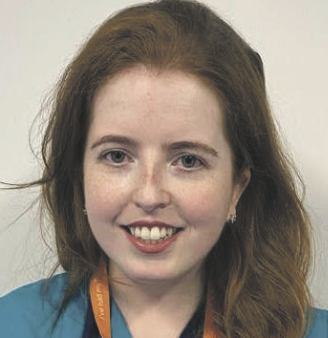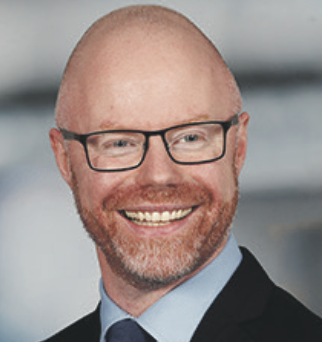Ongoing unsafe working hours and the HSE recruitment embargo have ignited fresh warnings of potential NCHD industrial action. Catherine Reilly and David Lynch report
In the past year, mixed messages have abounded about the State’s position on NCHDs’ unsafe working hours. In late 2022, the establishment of a national NCHD taskforce and a contractual agreement between the IMO and health management offered a semblance of hope, but this feeling has dissipated.
Implementation of the agreement has not met the IMO’s expectations. In July 2023, IMO NCHD Chair Dr Rachel McNamara told the Medical Independent (MI) that compliance with the rostering and compensatory rest rules across sites was “hit and miss”. She underlined that any roster gaps needed to be addressed through urgent recruitment. In recent weeks, however, the HSE has imposed a recruitment embargo on almost all grades, although not consultant and NCHD training posts.
The IMO has said it will “take all necessary action, including industrial action, to ensure NCHD contracts are honoured and the practice of working unsafe and illegal hours stops”.
Prior to the 2022 agreement, IMO NCHD members voted overwhelmingly for industrial action if their concerns were not addressed.
At press time, the IMO had not provided further comment on its next steps.
Embargo
In a circular on 13 October, HSE CEO Mr Bernard Gloster announced a recruitment “pause” on all grades that were beyond their recruitment targets for 2023. This followed a freeze imposed on new and replacement management and administration staff. The employment limit for non-training NCHDs was set “as at employment on 1 September 2023” and no additional agency staffing was permitted.
Citing budgetary constraints, Mr Gloster said there would be “no further growth in workforce in 2024” aside from specified posts for pre-existing commitments/developments (estimated at 2,000 whole-time equivalents-WTEs). He said a major component of the challenge was “inflation and unprecedented demand… these are as much a part of the challenge as control”.

Dr Rachel McNamara
“It is astounding that this decision could be made at this point in time,” commented the IMO’s Dr McNamara on the day this circular was issued. “Even in the depths of austerity there was no recruitment freeze on medical professionals as it was recognised that delivery of services had to be prioritised.”
IMO President Dr John Cannon said additional NCHDs recruited this year were the minimum necessary to deliver services. He said the HSE had acknowledged that a further 800 posts were required to reduce working hours in line with the 2022 NCHD agreement.
On 10 November the HSE extended the embargo to all staff grades, with exceptions remaining in place for consultants, NCHDs in training, and this year’s graduates in nursing and midwifery. According to the CEO’s circular, no further offers should be made, or “obligations entered into”, in respect of any posts except the above exemptions. It said offers not formally accepted, or where a contract had not issued, “should now be withdrawn”. This circular has intensified criticisms of Government and health management. The Irish Nurses and Midwives Organisation, for example, stated on 10 November it would consult members about balloting for industrial action.
A Department of Health spokesperson told MI the NCHD workforce was 8,579 WTEs in September, which was an increase of 583 WTE year-to-date. Since 2019, NCHDs had grown by 1,803 WTE or 27 per cent.
The HSE was “prioritising” full implementation of the 2022 NCHD agreement, said the spokesperson.
“Key objectives relating to the agreement and more generally for the Minister, the Department and the HSE are improving the work/life balance for NCHDs and compliance with the provisions of the Organisation of Working Time Act. It will be a matter for the HSE to develop solutions and to implement rosters in accordance with the agreement.

Health Minister Stephen Donnelly
“The Department recognises and accepts that this will require a range of measures and solutions across different sites, including the appointment of additional NCHDs over time. This is reflected in the increase of 583 NCHD WTEs year-to-date. The HSE and the Department are fully committed to delivering the provisions of the agreement including the terms relating to rostering.”
According to the Department, the issue of safe staffing for the medical workforce has been considered as part of the work of the NCHD taskforce.
The taskforce was established by Minister Stephen Donnelly in September 2022 to develop “sustainable workforce planning strategies and policies”. Last April, it released 42 interim recommendations covering areas such as induction, medical manpower, and infrastructure. The interim report recommended that the Department and HSE work together to “reshape” the medical workforce into “an appropriate configuration” that meets service, training, and Organisation of Working Time Act requirements.
A final set of recommendations is due to be completed in the coming weeks, stated the spokesperson. The Department’s health and social care workforce plan will also be finalised shortly.
Vision
On 9 November, just before the latest HSE circular dropped, the broader vision for the medical workforce was discussed at a conference in Dublin organised by HSE National Doctors Training and Planning (NDTP).
Chair of the NCHD taskforce, Prof Anthony O’Regan, told attendees it was expected the final report would be with the Minister by the end of November. The report would contain around 100 recommendations, outlined Prof O’Regan, who is Dean of the RCPI Institute of Medicine.
Speaking to MI at this event, NDTP Medical Director and taskforce member Prof Brian Kinirons said the report referenced “the fact that NCHDs feel undervalued” and “that we need to do something about it”.
Over the last six months, he said there had been “a significant investment” in infrastructure to “improve the NCHD experience at sites around the country”. Prof Kinirons said there was a recognition that improving the training experience was crucial to future recruitment and retention.
At the conference, MI asked HSE Chief Clinical Officer Dr Colm Henry about the impact of the recruitment embargo on medical workforce planning. Dr Henry referenced an intention to create more training opportunities to meet population needs.
Dr Henry referred to data presented at the conference that showed “going abroad has been part of the culture of Irish trainees”. He said the data also demonstrated that after a period of years there was a high rate of return of these trainees.
“Nevertheless, we wouldn’t be complacent at all, with the high number of trainees that go abroad. So, what we are doing now is enhancing training schemes. We want to create more training schemes, we want to have training schemes that are attuned to the needs of the population, we also need to support critical national specialties and we know we have trainees abroad training in these critical specialties.”
Dr Henry said he “absolutely” understood the concerns of NCHDs. He said the work of the taskforce was coming to completion “with a series of recommendations that will be implemented”.
Training places
It is healthcare policy that the ratio of NCHDs to consultants should be reduced, and that NCHD posts should be recognised for training as part of specialist training programmes (as outlined in the 2003 Hanly report).
But the system remains highly reliant on non-training scheme NCHDs, who are mostly international doctors. Increasing service demands and the need to improve compliance with the European Working Time Directive have been key drivers of this recruitment.
According to the NDTP’s medical workforce report for 2022-2023, “safe and timely” service delivery is “dependent” on non-training scheme doctors (NTSDs).
In 2022-2023, the number of specialist trainees rose by 4.5 per cent to 4,167, while the number of NTSDs rose by 5.7 per cent to 3,281. The number of consultants increased by 7 per cent to 3,814.
The NDTP report noted that the overall number of NTSDs continued to grow at a similar rate to that of consultants and thus the system was not moving towards the policy of a consultant-delivered service. Some specialties such as emergency medicine had particularly high proportions of NCHDs to consultants. In addition, some model 3 and model 2 hospitals had high proportions of NCHDs overall and were heavily reliant on NTSDs.
2024 training intake
Next July, GP training intake will rise to 350, a 20 per cent increase on 2023. But as of press time, there was no indication of any significant increase in training numbers across the hospital specialties.
At a conference on postgraduate training in May, the then RCPI President Prof Mary Horgan criticised the level of funding for specialist training in the context of increasing trainee numbers.
This month, the RCPI informed MI the number of places on its basic and higher specialist training programmes had increased by 30 per cent since 2016 and “there is a clear need to increase training numbers further”.
“We continue to work with the NDTP and the other postgraduate training bodies to define a plan that will allow us to create more training places into the future.”
The Chair of the Forum of Irish Postgraduate Medical Training Bodies, Mr Ken Mealy, said he envisaged that expansion of training places would be gradual. Speaking to MI on 7 November, he said expansion was dependent on the availability of trainers, accredited training sites, and funding.
“I am not aware that there is going to be any dramatic increase in trainee numbers next year,” stated Mr Mealy, while noting the announcement regarding GP training. “Certainly, there is an understanding, particularly looking at the Forum strategy and the NCHD Ministerial taskforce, that the training bodies will endeavour to increase training numbers in the coming years to try and reduce the number of so-called ‘non-trainees’, which is an awful term….
“But that has to be agreed year by year with the different training bodies, funding needs to be agreed, it requires looking at sites in a position to take on more trainees. A lot of work needs to be done in that regard,” outlined Mr Mealy, a Consultant General Surgeon and former RCSI President.
“There is an understanding we [as a healthcare system] should not be increasing the non-training posts more and we should be trying to channel as many posts as we possibly can into formal training posts, because that is the only way we are going to satisfy the increased consultant numbers that have been produced in the workforce modelling by NDTP.”
“It will be different for different training bodies,” he continued. RCSI, for example, had increased core surgical training intake from 60 to 80 in 2021. His understanding was there were no current plans to further increase this intake as “we don’t have any more appropriately validated training sites”.
He added: “I think there are a lot of people who are very well meaning in saying, yes, we need more training slots [across the training bodies], but how do we get there? How do we fund them? Have we got the capacity to train more? That is the dilemma. I think the numbers will increase but it won’t be a ‘big bang’… because we don’t have the capacity to do that.”
Mr Mealy agreed the system will remain dependent on non-training NCHDs over the short- to medium-term.
“For years we have been saying we don’t want to increase the non-training numbers, but the non-training numbers have continued to increase for years; that has been the unfortunate consequence of how we structure our health service.
“Will that change next year? I don’t know… I mean, embargoes on locums, when push comes to shove and somebody can’t provide a roster, they will get locums. That is what has always happened. I think we will continue to be severely challenged, particularly in the small hospitals, where they rely on locums and agency posts, and I don’t see how that can change, because otherwise you are going to have unsafe rosters.”
International doctors
“I have been getting calls from doctors that there were jobs on the different websites, but they are not there now; what are they going to do? They are asking me, and I don’t have an answer,” Dr Ali Raza, Vice-President of the Irish Society of International Doctors, told MI on 6 November.
“I have been in touch with many international doctors… who are in the process of [Medical Council] registration… they are really hopeless and the first question is, should we continue the process of registration, or should we just think about going to some other country?” Commenting on 9 November, a Medical Council spokesperson said it was “not aware of any doctor” discontinuing the registration process or closing their application due to the recruitment freeze.
Dr Raza said many doctors planned relocation to another country years in advance, and he indicated that recent developments could undermine confidence in Ireland as an employment location.
Ultimately, many international doctors in service posts wished to enter formal training, but despite some reforms, access was limited by a number of factors including the available slots.
Dr Raza added: “[The HSE circular] mentioned this is not going to impact the consultants or GP trainees. But my question is, are the consultants happy with this decision; can our consultants work without an NCHD?”
Nevertheless, we wouldn’t be complacent at all, with the high number of trainees that go abroad
Consultant
Dr Mick Molloy, Consultant in Emergency Medicine and IMO consultant committee member, said an embargo on NCHD posts would generate a relatively small cost-saving but have a significant impact on services. “The number of NCHDs compared to the total number of HSE employees is tiny. The effect on the HSE’s overall budget would be tiny, but the impact on an individual hospital or department who cannot replace or who cannot recruit is significant.”
When MI spoke to Dr Molloy on 9 November – one month following the initial HSE circular – there was still much ambiguity about the embargo’s terms. He reflected that “it is a very, very nervous position to be in”.
The smaller hospitals, particularly, had very tight on-call rotas. Any further deficit of doctors and restrictions on locum cover would present major challenges in delivery of services, according to Dr Molloy.
He also noted that doctors in these hospitals were often required to accompany patients requiring ambulance transfer to larger centres, which further eroded staffing.
The further away a hospital was from the large central hubs, the more adversely it was affected by the number of doctors dispatched in ambulances to ensure the patient’s safety.
“None of the smaller hospitals are actually resourced for that time and that contingency,” he said.
This could result in threadbare medical staffing in these emergency departments at night-time, for example.
The embargo was going to leave these hospitals in a “very, very difficult space”.












Leave a Reply
You must be logged in to post a comment.